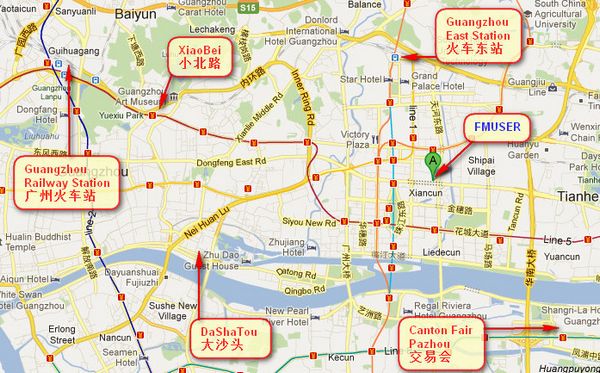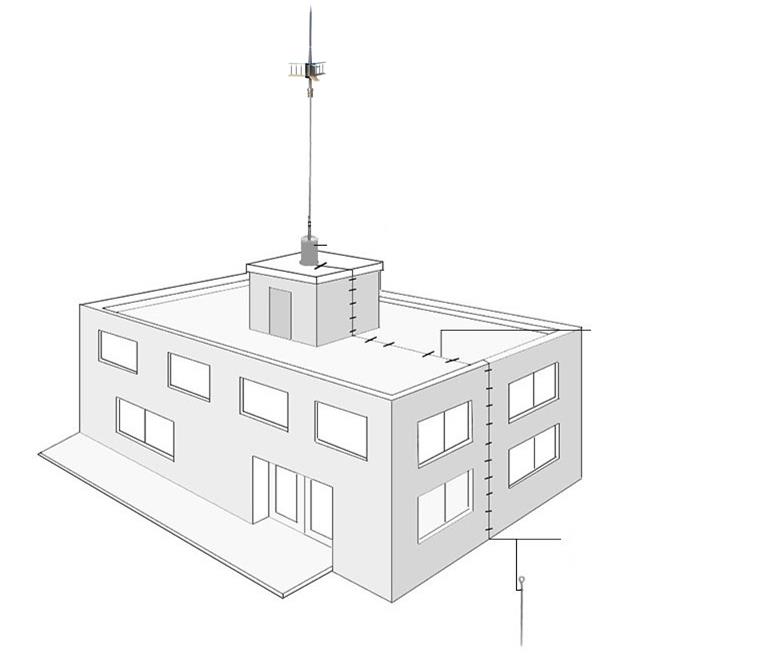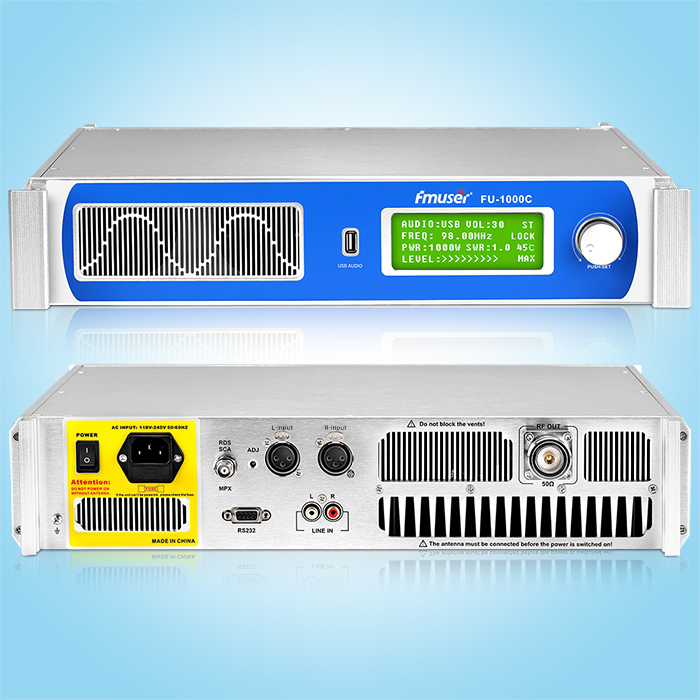1. RTP/RTCP protocol
RTP protocol
The full name of RTP is Real-time Transport Protocol (Real-time Transport Protocol).
It is a standard proposed by IETF (The Internet Engineering Task Force), and the corresponding RFC document is RFC3550 (RFC1889 is an expired version). RFC3550 not only defines RTP, but also defines the supporting related protocol RTCP (Real-time Transport Control Protocol, that is, Real-time Transport Control Protocol). RTP is used to provide end-to-end real-time transmission services for a variety of multimedia data that need to be transmitted in real time, such as voice, image, and fax on the IP network. RTP provides time information and stream synchronization for end-to-end real-time transmission on the Internet, but does not guarantee service quality, which is provided by RTCP.
RTP application environment
(1) Simple multicast audio conference. Voice communication is realized through a multicast address and a pair of ports. One is for audio data (RTP) and the other is for control packets (RTCP).
(2) Audio and video conferencing. If both audio and video conferences are used in a conference, these two media will be transmitted in different RTP sessions, and each session will use a different transmission address (IP address + port). If a user uses two sessions at the same time, the RTCP packet corresponding to each session uses the canonical name CNAME (Canonical Name). Participants can obtain the associated audio and video according to the CNAME in the RTCP packet, and then synchronize the audio and video according to the timing information (Network time protocol) in the RTCP packet.
(3) Translator and mixer. The translator and mixer are both RTP-level relay systems. Translators are used in user areas that cannot be directly reached through IP multicast, such as a firewall between the sender and the receiver. When the audio encoding format that participants can receive is different, for example, if a participant connects to a high-speed conference through a low-speed link, a mixer is used. Before entering the network where the audio data format needs to be changed, the mixer reconstructs the audio packets from one source or multiple sources, merges the reconstructed multiple audios, and encodes them with another audio encoding. Forward this new RTP packet. All data packets from a mixer should be identified by the mixer as their synchronization source (SSRC, see RTP encapsulation), and the talker can be confirmed through the contribution source list (CSRC table, see RTP encapsulation).
RTCP protocol
Real-time Control Protocol (RTCP) and RTP are jointly defined in RFC 1889 proposed in 1996. It is a control protocol that works with RTP. RTCP runs on the low-level protocol alone, and the low-level protocol provides multiplexing of data and control packets. During the RTP session, each session participant periodically sends RTCP control packets to all other participants. For RTP sessions or broadcasts, a single multi-target broadcast address is usually used. All RTP and RTCP packets belonging to this session use this multi-target broadcast address. RTP packets and RTCP packets can be distinguished by using different port numbers. .
is a sister protocol of Real Time Transport Protocol (RTP). RTCP provides out-of-band control for RTP media streams. RTCP itself does not transmit data, but cooperates with RTP to package and send multimedia data. RTCP periodically transmits control data between participants in a streaming multimedia session. The main function of RTCP is to provide feedback on the Quality of Service provided by RTP.
RTCP performs the following four functions:
(1) Mainly to provide feedback on the quality of data release. RTCP is a part of the RTP transmission protocol and is related to the flow and congestion control of other transmission protocols. Feedback has a direct effect on adaptive encoding control, but IP multicast experience shows that receiving feedback from the sender is crucial for diagnosing transmission errors. Sending and receiving feedback reports to all participants allows problem observers to estimate whether those problems are local or global. Publishing mechanisms such as IP multicasting make it possible for groups such as network service providers to receive feedback and act as third-party monitors to diagnose network problems. The feedback function is performed by the RTCP sender and receiver reports.
(2) RTCP carries an RTP source persistent transport layer identification called a canonical name (CNAME). If a conflict is found, or the program is restarted, since the SSRC identity can be changed, the recipient needs CNAME to track the participant. The receiver also needs the CNAME to contact several data streams given in the relevant RTP connection.
(3) The first two functions require all participants to send RTCP packets. Therefore, in order for RTP to expand to large-scale quantities, the rate must be controlled. Let each participant send control packets to other participants, which increases the number of independent observation participants. This number is used to calculate the rate at which packets are sent.
(4) The optional function is to transmit minimum connection control information, such as identifying participants. Most likely to be used in "loose control" connections, where participants are free to enter or leave without member control or parameter coordination. RTCP acts as a convenient channel to all participants, but does not have to support all control communication requirements of the application.
When RTP is used in IP multicast, the first three functions are necessary and recommended for all situations. RTP application designers must avoid using mechanisms that only work in unicast mode, which will result in the inability to scale.
2. The relationship between RTP/RTCP and other protocols

Streaming media architecture diagram

The relationship between RTP protocol and other protocols
RTP, TCP, and UDP are all transport layer protocols; RTP can also be considered to be between the application layer and the transport layer
As can be seen from the figure, RTP is divided into the transport layer, which is built on UDP. Like the UDP protocol, in order to realize its real-time transmission function, RTP also has a fixed encapsulation form. RTP is used to provide time information and stream synchronization for end-to-end real-time transmission, but it does not guarantee the quality of service. The quality of service is provided by RTCP.
3. RTMP protocol
RTMP (Real Time Messaging Protocol) real-time messaging protocol is an open protocol developed by Adobe Systems for audio, video and data transmission between Flash players and servers.
It has three variants:
1) A plaintext protocol working on TCP, using port 1935;
2) RTMPT is encapsulated in the HTTP request and can traverse the firewall;
3) RTMPS is similar to RTMPT, but uses HTTPS connection;
The RTMP protocol is used by Flash for the transmission of objects, video, and audio. This protocol is based on the TCP protocol or the polling HTTP protocol;
The RTMP protocol is like a container used to hold data packets. These data can be data in AMF format or video/audio data in FLV;
A single connection can transmit multiple network streams through different channels. The packets in these channels are all transmitted in fixed-size packets;



|
|
|
|
How far(long) the transmitter cover?
The transmission range depends on many factors. The true distance is based on the antenna installing height , antenna gain, using environment like building and other obstructions , sensitivity of the receiver, antenna of the receiver . Installing antenna more high and using in the countryside , the distance will much more far.
EXAMPLE 5W FM Transmitter use in the city and hometown:
I have a USA customer use 5W fm transmitter with GP antenna in his hometown ,and he test it with a car, it cover 10km(6.21mile).
I test the 5W fm transmitter with GP antenna in my hometown ,it cover about 2km(1.24mile).
I test the 5W fm transmitter with GP antenna in Guangzhou city ,it cover about only 300meter(984ft).
Below are the approximate range of different power FM Transmitters. ( The range is diameter )
0.1W ~ 5W FM Transmitter :100M ~1KM
5W ~15W FM Ttransmitter : 1KM ~ 3KM
15W ~ 80W FM Transmitter : 3KM ~10KM
80W ~500W FM Transmitter : 10KM ~30KM
500W ~1000W FM Transmitter : 30KM ~ 50KM
1KW ~ 2KW FM Transmitter : 50KM ~100KM
2KW ~5KW FM Transmitter : 100KM ~150KM
5KW ~10KW FM Transmitter : 150KM ~200KM
How to contact us for the transmitter?
Call me +8618078869184 OR
Email me [email protected]
1.How far you want to cover in diameter ?
2.How tall of you tower ?
3.Where are you from ?
And we will give you more professional advice.
About Us
FMUSER.ORG is a system integration company focusing on RF wireless transmission / studio video audio equipment / streaming and data processing .We are providing everything from advice and consultancy through rack integration to installation, commissioning and training.
We offer FM Transmitter, Analog TV Transmitter, Digital TV transmitter, VHF UHF Transmitter, Antennas, Coaxial Cable Connectors, STL, On Air Processing, Broadcast Products for the Studio, RF Signal Monitoring, RDS Encoders, Audio Processors and Remote Site Control Units, IPTV Products, Video / Audio Encoder / Decoder, designed to meet the needs of both large international broadcast networks and small private stations alike.
Our solution has FM Radio Station / Analog TV Station / Digital TV Station / Audio Video Studio Equipment / Studio Transmitter Link / Transmitter Telemetry System / Hotel TV System / IPTV Live Broadcasting / Streaming Live Broadcast / Video Conference / CATV Broadcasting system.
We are using advanced technology products for all the systems, because we know the high reliability and high performance are so important for the system and solution . At the same time we also have to make sure our products system with a very reasonable price.
We have customers of public and commercial broadcasters, telecom operators and regulation authorities , and we also offer solution and products to many hundreds of smaller, local and community broadcasters .
FMUSER.ORG has been exporting more than 15 years and have clients all over the world. With 13 years experience in this field ,we have a professional team to solve customer's all kinds of problems. We dedicated in supplying the extremely reasonable pricing of professional products & services. Contact email : [email protected]
Our Factory

We have modernization of the factory . You are welcome to visit our factory when you come to China.

At present , there are already 1095 customers around the world visited our Guangzhou Tianhe office . If you come to China , you are welcome to visit us .
At Fair

This is our participation in 2012 Global Sources Hong Kong Electronics Fair . Customers from all over the world finally have a chance to get together.
Where is Fmuser ?

You can search this numbers " 23.127460034623816,113.33224654197693 " in google map , then you can find our fmuser office .
FMUSER Guangzhou office is in Tianhe District which is the center of the Canton . Very near to the Canton Fair , guangzhou railway station, xiaobei road and dashatou , only need 10 minutes if take TAXI . Welcome friends around the world to visit and negotiate .
Contact: Sky Blue
Cellphone: +8618078869184
WhatsApp: +8618078869184
Wechat: +8618078869184
E-mail: [email protected]
QQ: 727926717
Skype: sky198710021
Address: No.305 Room HuiLan Building No.273 Huanpu Road Guangzhou China Zip:510620
|
|
|
|
English: We accept all payments , such as PayPal, Credit Card, Western Union, Alipay, Money Bookers, T/T, LC, DP, DA, OA, Payoneer, If you have any question , please contact me [email protected] or WhatsApp +8618078869184
-
PayPal.  www.paypal.com www.paypal.com
We recommend you use Paypal to buy our items ,The Paypal is a secure way to buy on internet .
Every of our item list page bottom on top have a paypal logo to pay.
Credit Card.If you do not have paypal,but you have credit card,you also can click the Yellow PayPal button to pay with your credit card.
---------------------------------------------------------------------
But if you have not a credit card and not have a paypal account or difficult to got a paypal accout ,You can use the following:
Western Union.  www.westernunion.com www.westernunion.com
Pay by Western Union to me :
First name/Given name: Yingfeng
Last name/Surname/ Family name: Zhang
Full name: Yingfeng Zhang
Country: China
City: Guangzhou
|
---------------------------------------------------------------------
T/T . Pay by T/T (wire transfer/ Telegraphic Transfer/ Bank Transfer)
First BANK INFORMATION (COMPANY ACCOUNT):
SWIFT BIC: BKCHHKHHXXX
Bank name: BANK OF CHINA (HONG KONG) LIMITED, HONG KONG
Bank Address: BANK OF CHINA TOWER, 1 GARDEN ROAD, CENTRAL, HONG KONG
BANK CODE: 012
Account Name : FMUSER INTERNATIONAL GROUP LIMITED
Account NO. : 012-676-2-007855-0
---------------------------------------------------------------------
Second BANK INFORMATION (COMPANY ACCOUNT):
Beneficiary: Fmuser International Group Inc
Account Number: 44050158090900000337
Beneficiary's Bank: China Construction Bank Guangdong Branch
SWIFT Code: PCBCCNBJGDX
Address: NO.553 Tianhe Road, Guangzhou, Guangdong,Tianhe District, China
**Note: When you transfer money to our bank account, please DO NOT write anything in the remark area, otherwise we won't be able to receive the payment due to government policy on international trade business.
|
|
|
|
* It will be sent in 1-2 working days when payment clear.
* We will send it to your paypal address. If you want to change address, please send your correct address and phone number to my email [email protected]
* If the packages is below 2kg,we will be shipped via post airmail, it will take about 15-25days to your hand.
If the package is more than 2kg,we will ship via EMS , DHL , UPS, Fedex fast express delivery,it will take about 7~15days to your hand.
If the package more than 100kg , we will send via DHL or air freight. It will take about 3~7days to your hand.
All the packages are form China guangzhou.
* Package will be sent as a "gift" and declear as less as possible,buyer don't need to pay for "TAX".
* After ship, we will send you an E-mail and give you the tracking number.
|
|
|
For Warranty .
Contact US--->>Return the item to us--->>Receive and send another replace .
Name: Liu xiaoxia
Address: 305Fang HuiLanGe HuangPuDaDaoXi 273Hao TianHeQu Guangzhou China.
ZIP:510620
Phone: +8618078869184
Please return to this address and write your paypal address,name,problem on note: |
|



























